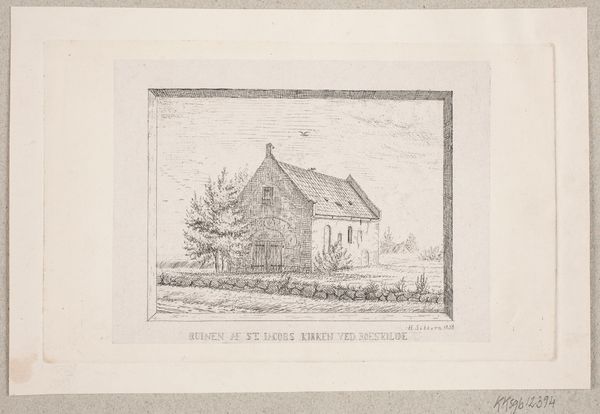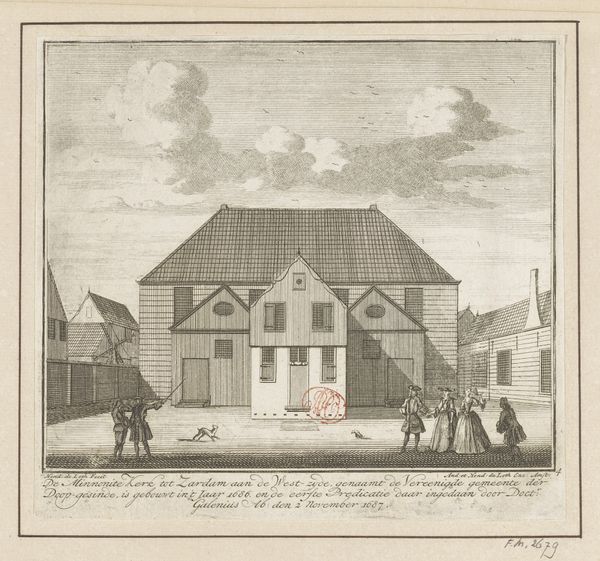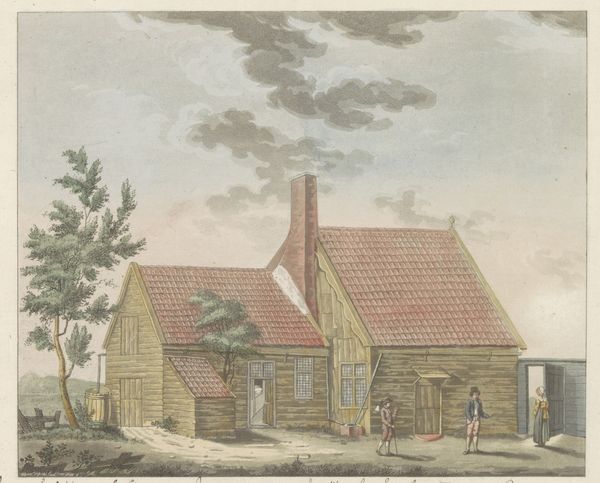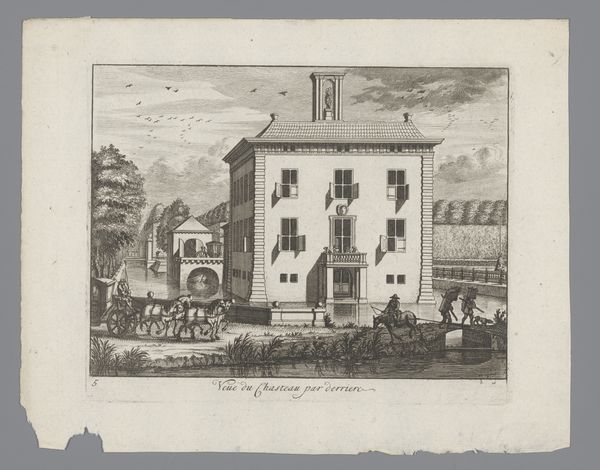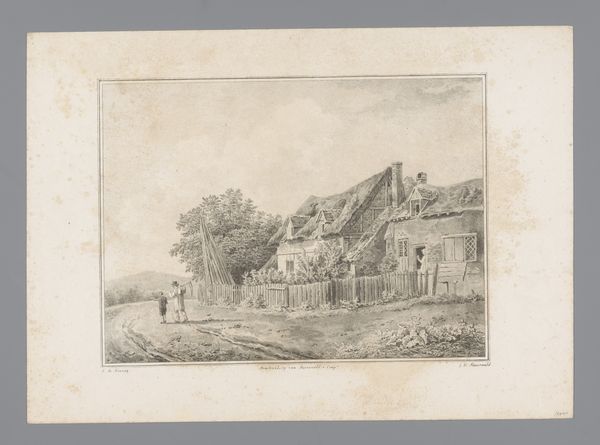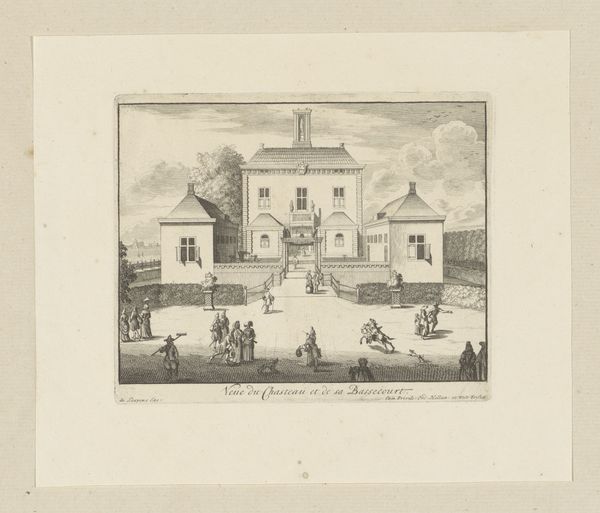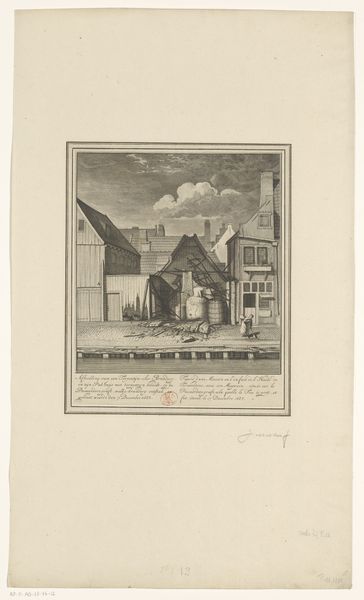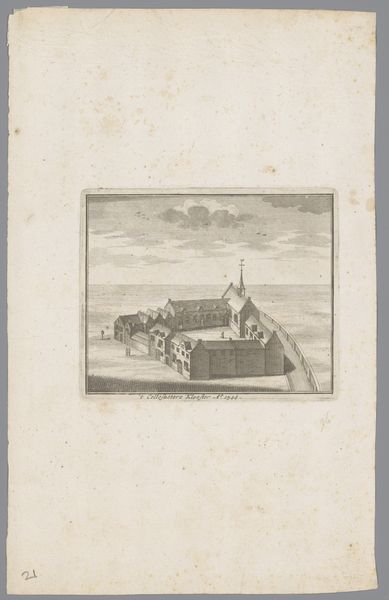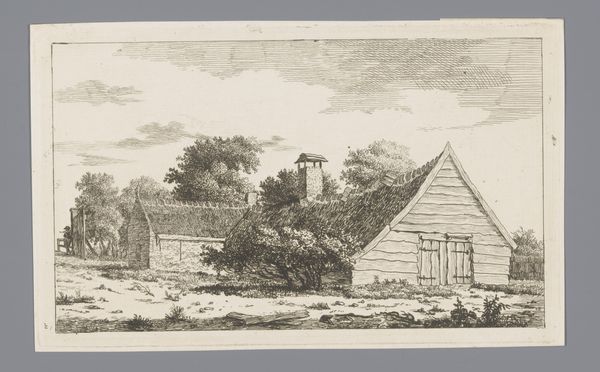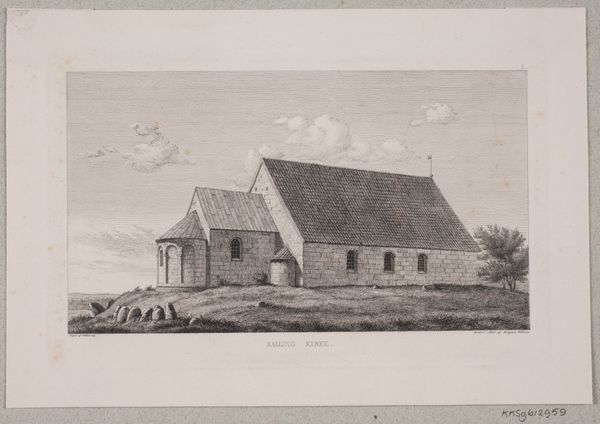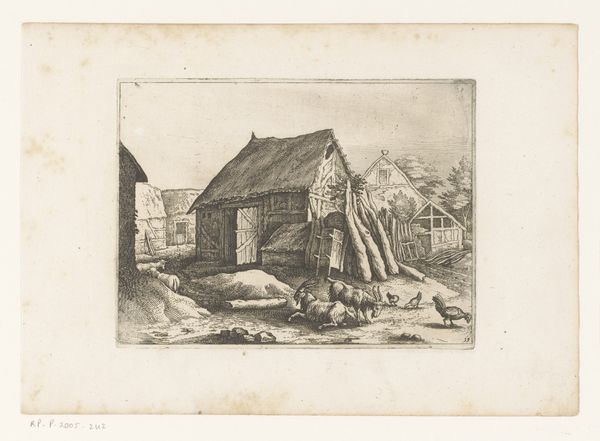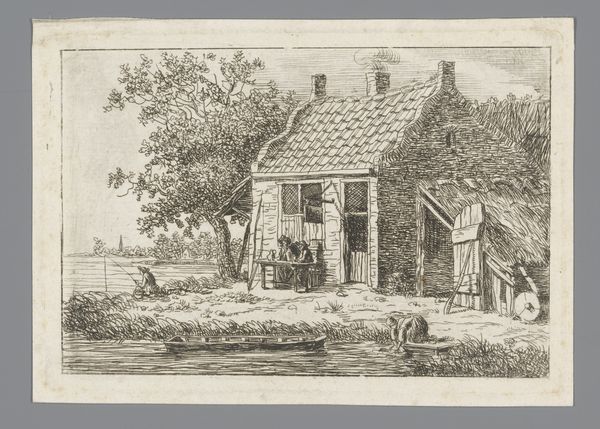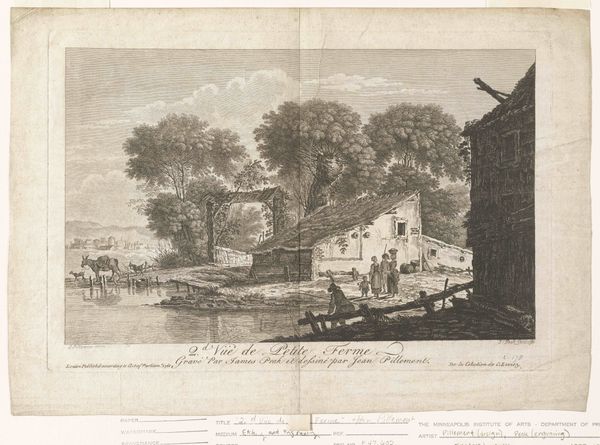
drawing, paper, engraving
#
drawing
#
dutch-golden-age
#
landscape
#
paper
#
cityscape
#
engraving
Dimensions: height 174 mm, width 145 mm
Copyright: Rijks Museum: Open Domain
Curator: Welcome. We’re looking at Hendrik de Leth’s “The Catholic Church in Zaandam,” a cityscape executed between 1725 and 1731. It's a detailed engraving on paper. What strikes you first? Editor: The stark simplicity, really. It’s almost brutally direct. The composition feels so flat and frontal, and with the building's lack of ornamentation, the almost complete absence of nature... it creates a sort of...oppressive feeling, maybe? Curator: The lack of ornamentation underscores the building’s functionality. Leth focuses on the architectural forms, rendering the facade with precise lines and a clear understanding of perspective. Consider the rigorous arrangement of windows and the geometric regularity of the roof tiles; this demonstrates a commitment to order and structural integrity. Editor: But order for whom, and at what cost? It's vital to remember that in the 18th century, the Catholic community in the Netherlands faced significant restrictions. The starkness, to me, resonates with a sense of being hidden, of practicing faith under societal pressure. Curator: While such contextual factors can be considered, focusing solely on socio-political conditions risks overlooking Leth’s artistic choices. Notice how he creates depth by contrasting the dark canal with the light façade of the church. Editor: And consider *who* is in that little boat down there, compared to who is around the building--it isn’t arbitrary. I am curious what the inscription at the bottom refers to: “to exercise her free religion, is built”. How free? The visual evidence seems contradictory. Was this image itself a subversive act, subtly advocating for religious tolerance amidst a climate of discrimination? Curator: A plausible reading. However, one could also interpret the scene more simply as a record of existing architecture in relation to the public life around it. Regardless, the precision in de Leth's mark-making results in a captivating image. Editor: I agree. That tension—the image’s formal qualities versus its potential symbolic weight— is exactly what makes it so compelling and gives it resonance, even today. The way the building looms, devoid of traditional beauty… Curator: Ultimately, that ambiguity and complexity may be precisely what de Leth sought.
Comments
No comments
Be the first to comment and join the conversation on the ultimate creative platform.
